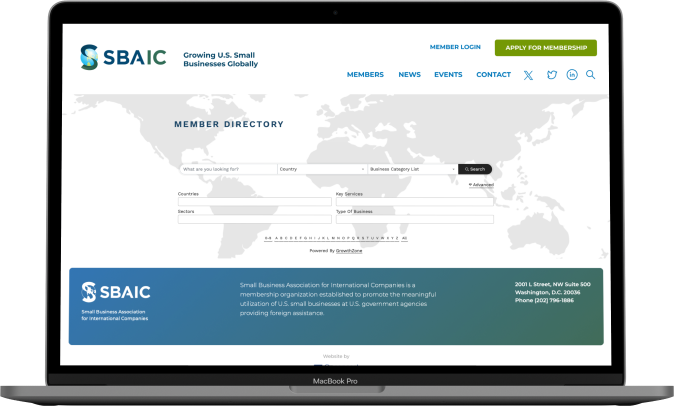Fraym
Our understanding of climate change is expanding beyond its direct impacts on the natural world and into the lives and livelihoods of people living in vulnerable environments. Climate change is becoming increasingly inseparable from long-standing challenges such as poverty, food security and conflict. Definitions of vulnerability to climate change are growing, weaving together environmental and socioeconomic factors—a challenge that Fraym was designed to tackle.
Fraym technology allows analysts to incorporate hundreds of data sources in an understanding of vulnerability to climate change. This understanding encompasses the environmental information, such as datasets from the National Oceanic and Atmospheric Administration and the United States Geological Survey, and socioeconomic indicators from household surveys. Combining disparate data sources and types provides a critical understanding of the adaptation potential and resilience of people and communities living with this threat. We illustrated the power of this approach in two similarly vulnerable countries with radically different contexts: Mali and Malawi.
Following the United Nations’ Intergovernmental Panel on Climate Change (IPCC), Fraym’s index follows a threefold outline of contributing factors to vulnerability: exposure, sensitivity and adaptive capacity. Exposure captures the strength and frequency of extreme climatic weather, for which Fraym draws on geospatial and satellite imagery to pair environmental conditions with reports of droughts, irregular rainfall and floods. Sensitivity measures the factors that could spark or worsen the impact of a climate shock in an area, such as agricultural methods, types of farmers and access to public services. Fraym’s index represents sensitivity with measures of food and water security, agricultural practices and household composition using microdata from publicly available household surveys. Finally, Fraym compiled over 15 indicators to measure four major categories of adaptive capacity: social, human, financial and physical capital. These groupings include education completion rates, access to agricultural markets, and income levels, among other indicators.
Once identified, Fraym technology pairs these varying datasets—household surveys and remotely sensed data—to create square-kilometer estimates for each indicator in the index. Using a principal component analysis, Fraym analysts combined these high-resolution heatmaps for each indicator to construct the final climate vulnerability index. The result is a square-kilometer-level understanding of vulnerability to climate change that incorporates environmental and socioeconomic characteristics.
Applied to Mali and Malawi, the resulting heatmap reveals both national-level trends, along with key community-level differences, in the driving factors to vulnerability. In Malawi, the vulnerability map highlights the country’s southern regions as most vulnerable. Zooming into Mangochi district, adaptive capacity stands out as the predominant challenge; it ranks 27 out of the 28 districts in the country, meaning its resilience against climate-related shocks is weaker than the majority of districts. Financial, physical and human capital are all relatively weak at the sub-national level in Mangochi, with some communities more in need than others. These categories are solvable challenges that Fraym’s hyperlocal data can pinpoint, allowing implementers to identify areas with infrastructure gaps, cash-in-cash-out services, literacy programs and more.
In Mali, vulnerability to climate change requires adjustments in our representations of adaptive capacity and sensitivity. Here, communities rely more heavily on livestock and pastoralist lifestyles compared to Malawi’s higher dependency on agricultural income, a key contextual difference that Fraym adjusted for in its final index. Once mapped, the index revealed similar trends from national to community level.
In Mali, vulnerability tends to decrease from north to south, due to both more favorable environmental factors and increased population density in the south. However, these national-level trends belie high levels of vulnerability at the community level. For example, the Gao region ranks fifth out of Mali’s 10 regions, while Ansongo Cercle within Gao ranks ninth out of 50 cercles nationwide. Ansongo Cercle’s adaptive capacity is concerning, with over 95 percent of people classified as having both low adaptive capacity and high vulnerability to climate change. These subregional hotspots would have remained invisible without Fraym’s hyperlocal approach.
Whether comparing trends within a district like Mangochi or factors within vulnerable cercles like Ansongo, our index reveals key differences in the subcomponents that define resilience to climate change. With a better understanding of vulnerability to climate change and its cross-cutting components, implementers are better equipped to identify and address gaps in adaptive capacity and reach vulnerable populations with greater efficiency and effectiveness. Differences between Mali and Malawi—and within their own respective communities—highlight the need for a keen understanding of how socio-demographics and responses to environmental change may affect participant outcomes. Fraym’s approach of pairing environmental and socioeconomic factors paints a detailed baseline portrait of highly vulnerable populations down to where implementation matters most: the community.







